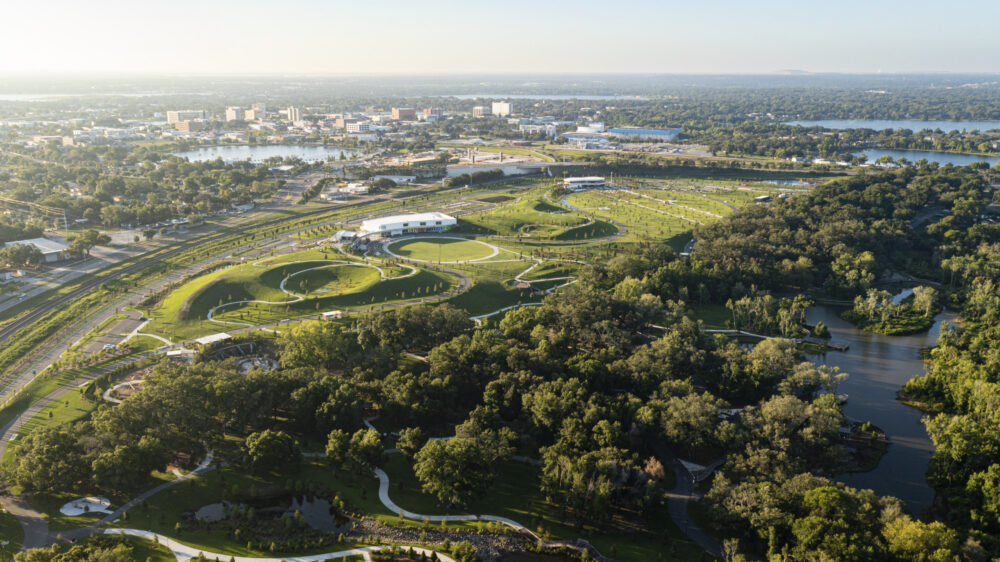
Bonnet Springs Park
Lakeland, FL
 Sasaki
Sasaki
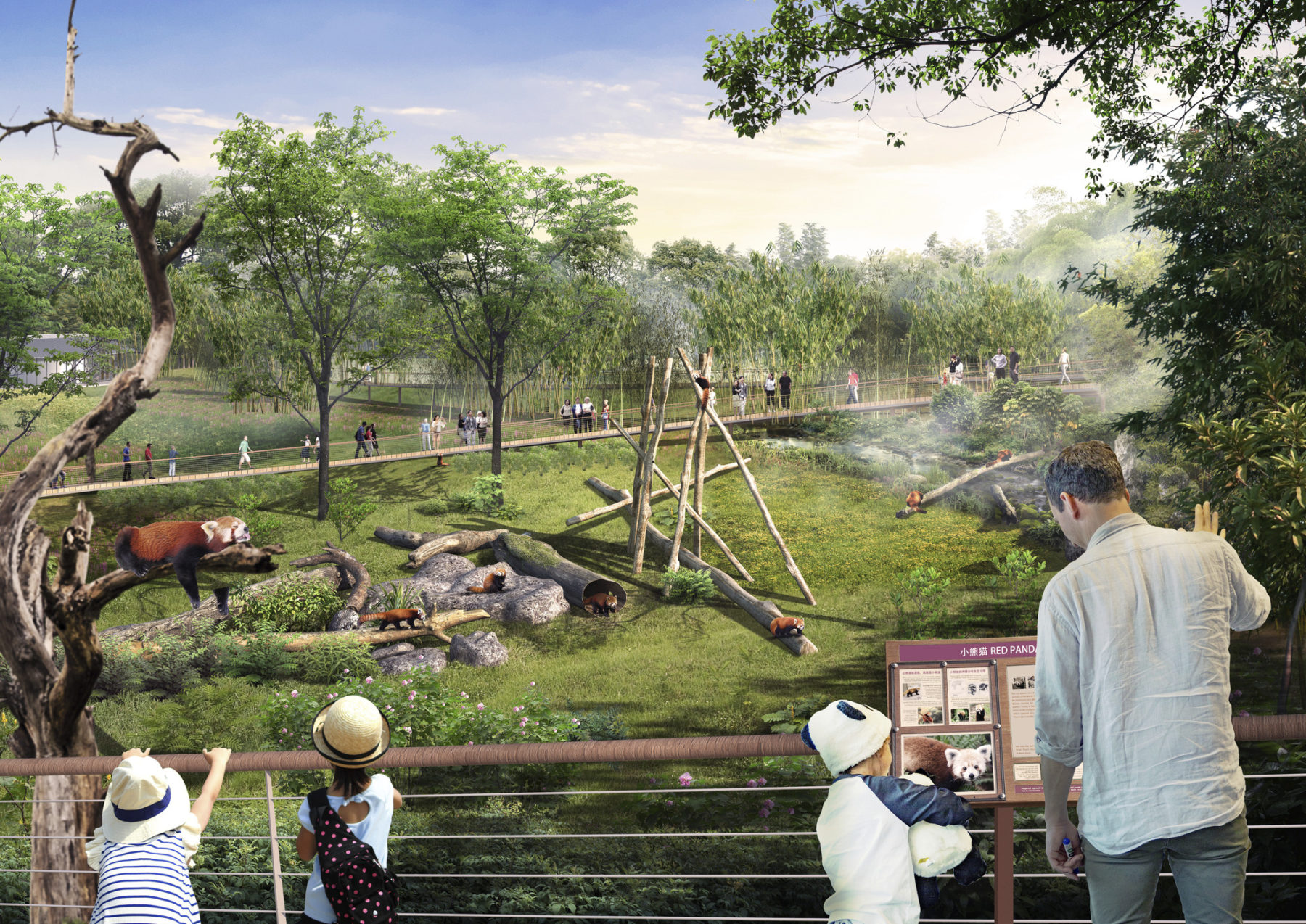
Ecology, at its base, is the study of how living things interact with each other and the environment. It includes the ways that soils and water influence which plants grow in an area and how those plants compete with each other; it includes the ways that parasites and diseases spread through a population of organisms; it includes the ways that a shift in the population of one animal might affect the animals that eat it, or the plants that it eats. Broad in both topic and scale, the study of ecology involves most of the plants, animals, soils, and materials that we interact with in our lives.
Working as a landscape designer, my background as an ecologist means that I am constantly trying to knit together the ways that the plants, animals, soils, water, and microbes might interact in a designed landscape. I try to determine what the baseline habitat for an area might be: what are the native flora and fauna, and what sort of landscape do they live in? Given the changes we’ve made to the soils, water, and sunlight in our built areas, how can we integrate them into a design? How might a built landscape support a specific plant or animal? How might it connect patches of natural areas that are otherwise cut off from each other? Which specific questions I focus on depends on the project and its context. In a general sense, I try to determine how to integrate nature into the built environment as responsibly as possible.
With all this in mind, how does a project that focuses on ecology differ than one that focuses on sustainability?
Sustainability, like ecology, is a broad field. It involves using resources in a way that can be sustained over time. This applies to natural resources, such as land, energy and water, as well as more ethereal resources, like the balance of gases in our atmosphere. Sustainability strategies focus on conserving water, reducing waste, or minimizing greenhouse gas emissions, to name a few.
Sustainability and ecology are clearly related: they both, broadly speaking, have to do with environmental consciousness and maintaining a healthy balance among living things on Earth. Their different lenses sometimes coincide nearly perfectly, arriving at the same solution through different means. Perhaps a project includes a vegetated retention pond, for instance. From an ecological perspective, this is beneficial because it can support native wetland plants, increase water infiltration into the surrounding soil, and perhaps act as a habitat stopover for wetland creatures. From a sustainability perspective, the vegetated retention pond decreases the amount of water passing through the stormwater system which would otherwise need to be treated and could contribute to a combined sewer overflow; perhaps the water also provides supplemental irrigation, decreasing the use of potable water in the landscape. In this case, the vegetated retention pond is a good solution from both sustainability and ecological perspectives, though the metrics used to measure its success might differ.
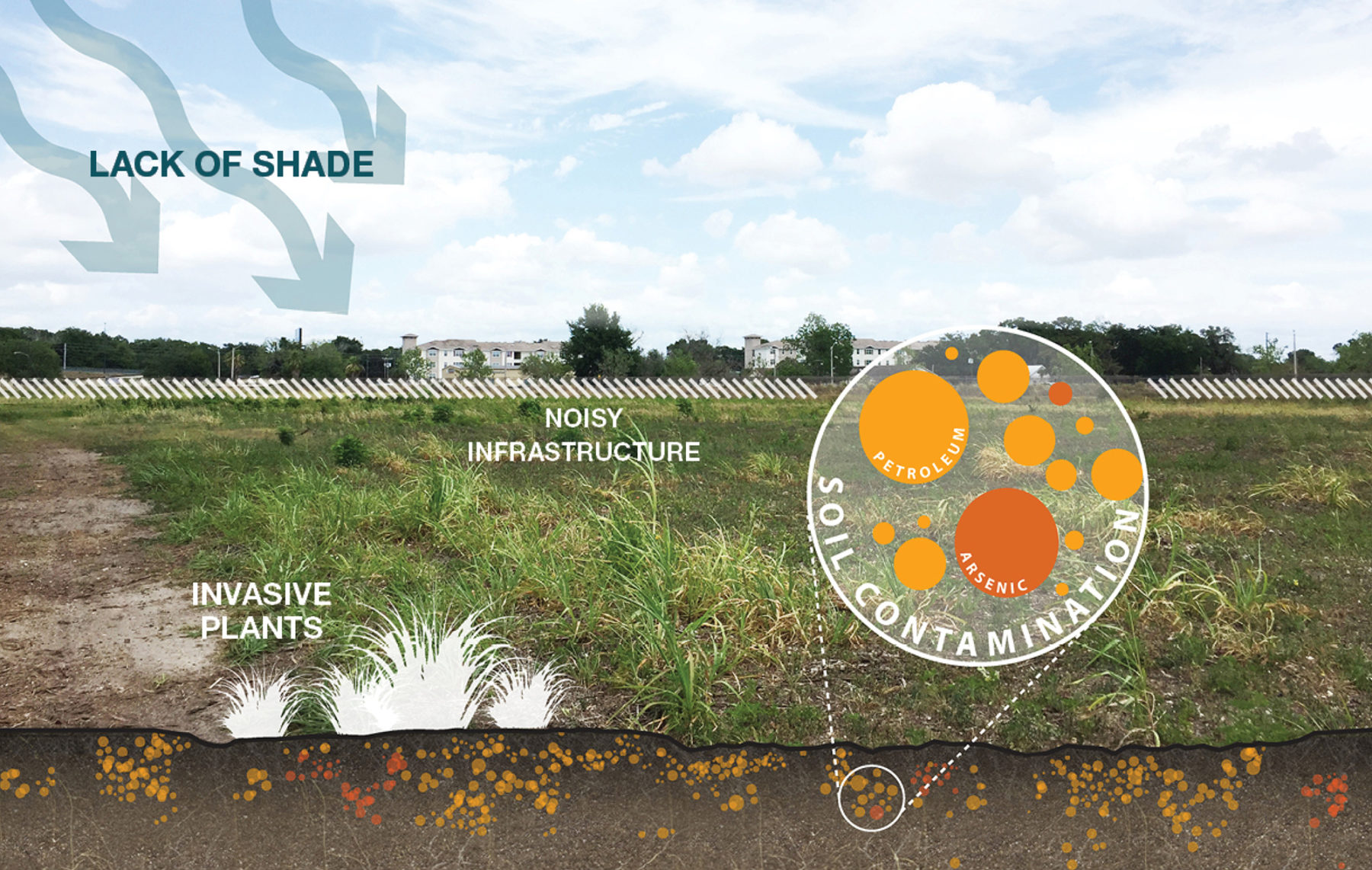
The successful history of the railyard that formerly occupied Bonnet Springs Park left contaminated soils with high levels of arsenic
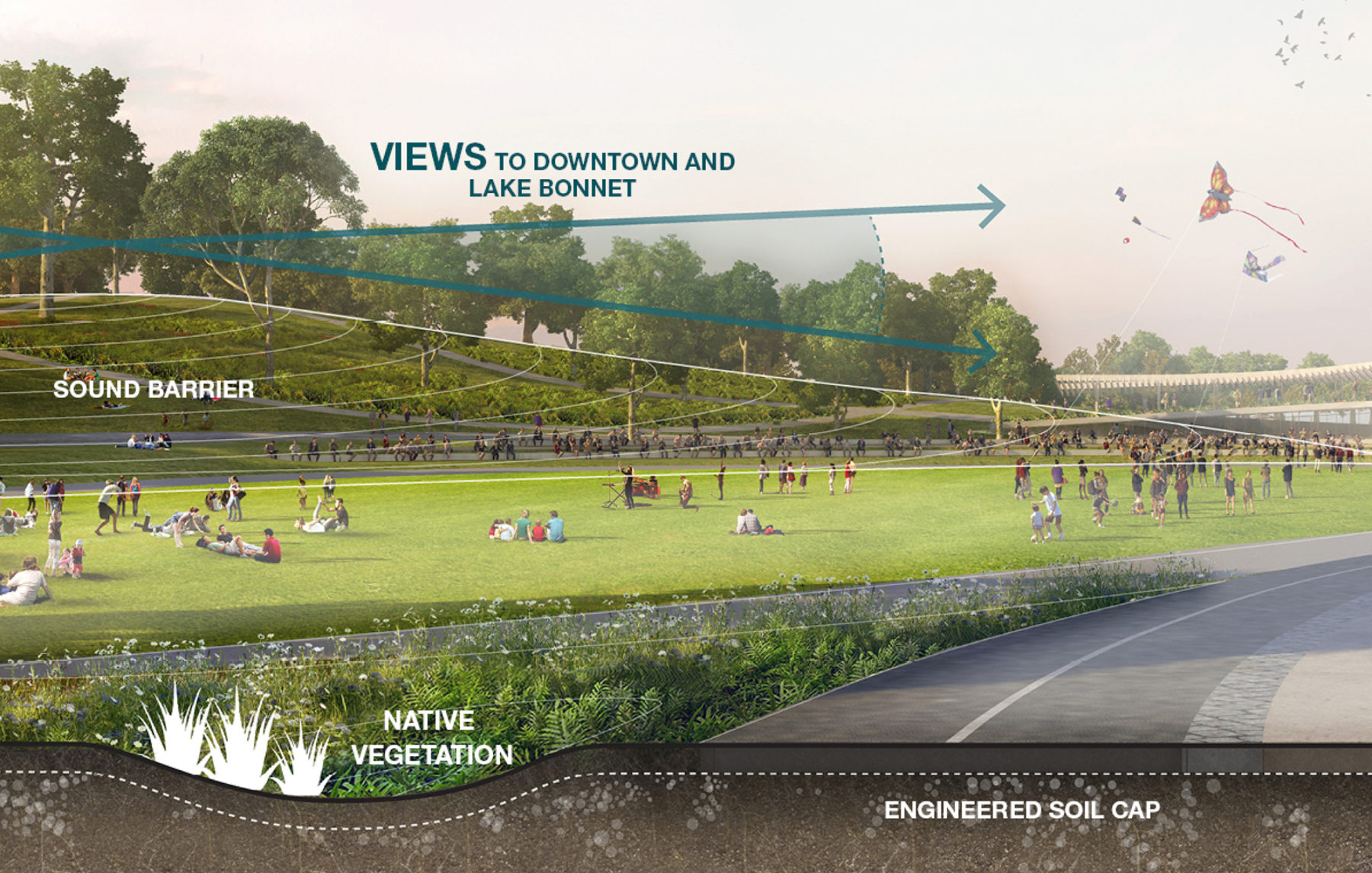
Keeping the contaminated soil on-site and capping it with clean topsoil prevented its further spreading into surrounding soils and waters, making the site safe for both human and non-human users
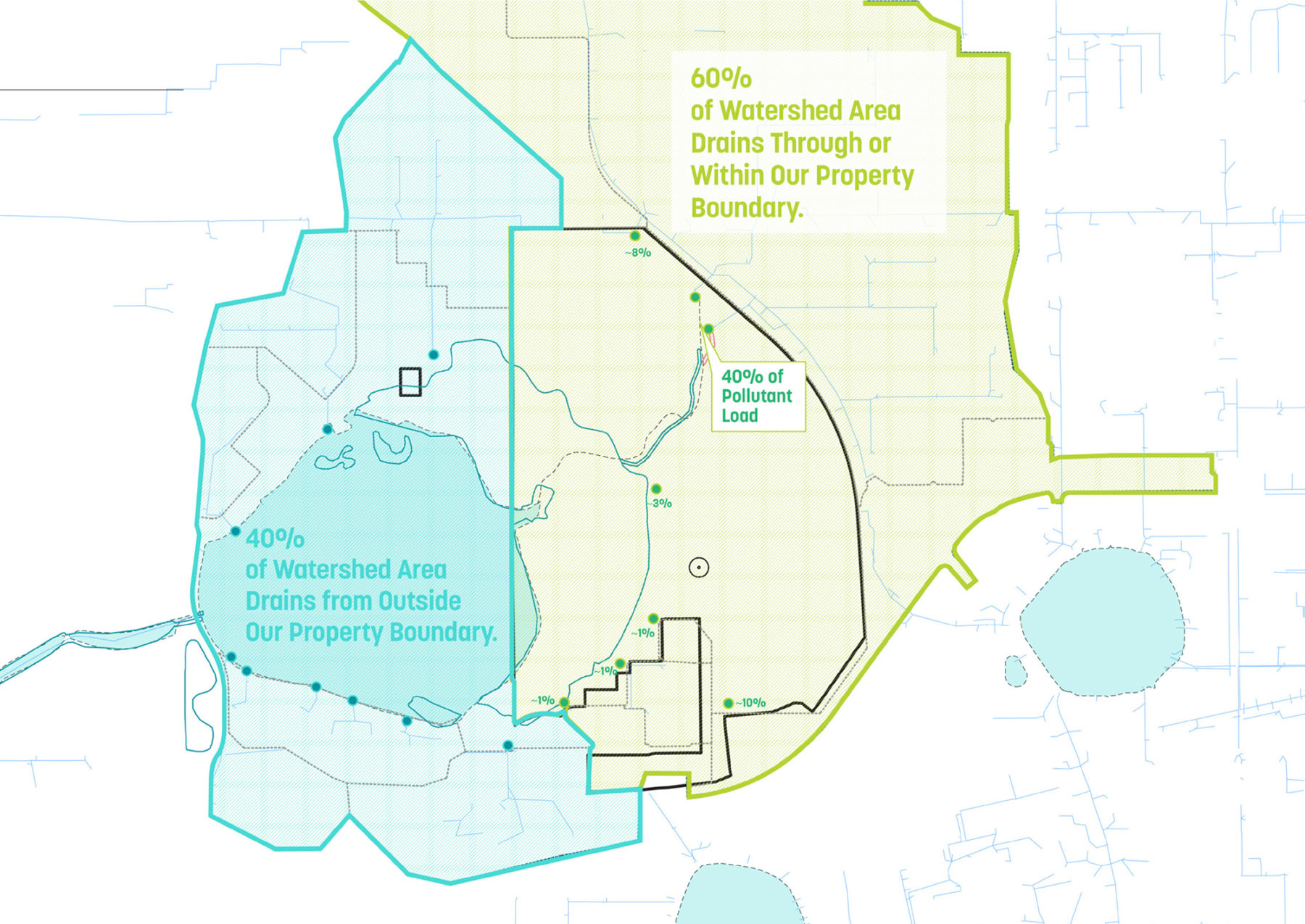
Lake Bonnet, located at the center of Bonnet Springs Park, suffers from high levels of pollution because it receives contaminated water from a 300-acre watershed. The Sasaki design team plans to divert the water so that it flows through a series of constructed wetlands, improving the lake’s water quality while creating new wetland habitat for native flora and fauna.
In other cases, these two lenses might lead to different and sometimes conflicting priorities. Let’s look at a river restoration, for instance. Perhaps to return a river to its more natural state, it will be dechannelized: it will regain a meandering course that it once had, running over shallow riffles and through wetlands. This will support numerous river-dwelling plants and animals: perhaps it lets trout or shad spawn in areas that had been cut off to them for decades; perhaps it acts as habitat for rare or threatened riverine plants; maybe there’s a backwater area that is perfect for breeding frogs or salamanders. The increased vegetation filters pollutants and shades the water, allowing it to carry more oxygen. All of this speaks as a win for the types of metrics that might use an ecological lens. From a sustainability perspective, many of these changes are also beneficial. Increased vegetation captures more carbon, and healthy river food webs support many ecosystem services that influence water and air quality as well as quality of life. But there are tradeoffs, as there always are: earth moving carries a heavy carbon cost, both because of the emissions of the machinery carrying the soil, and because it disrupts microbial processes. To achieve the same level of flood protection with a meandering river, a broader swath of land is needed than when the river was channelized. This might necessitate a road being demolished and rerouted, or a new bridge that connects across the floodplain. Trees will be cleared, as the ground they grew on is either raised or lowered. This theoretical project, like all real projects, has tradeoffs. If we were looking only at the carbon cost, it would seem untenable. If we were looking only at preserving existing trees, it would be unfeasible. But we’re trying to weigh all of these drawbacks and benefits against each other.
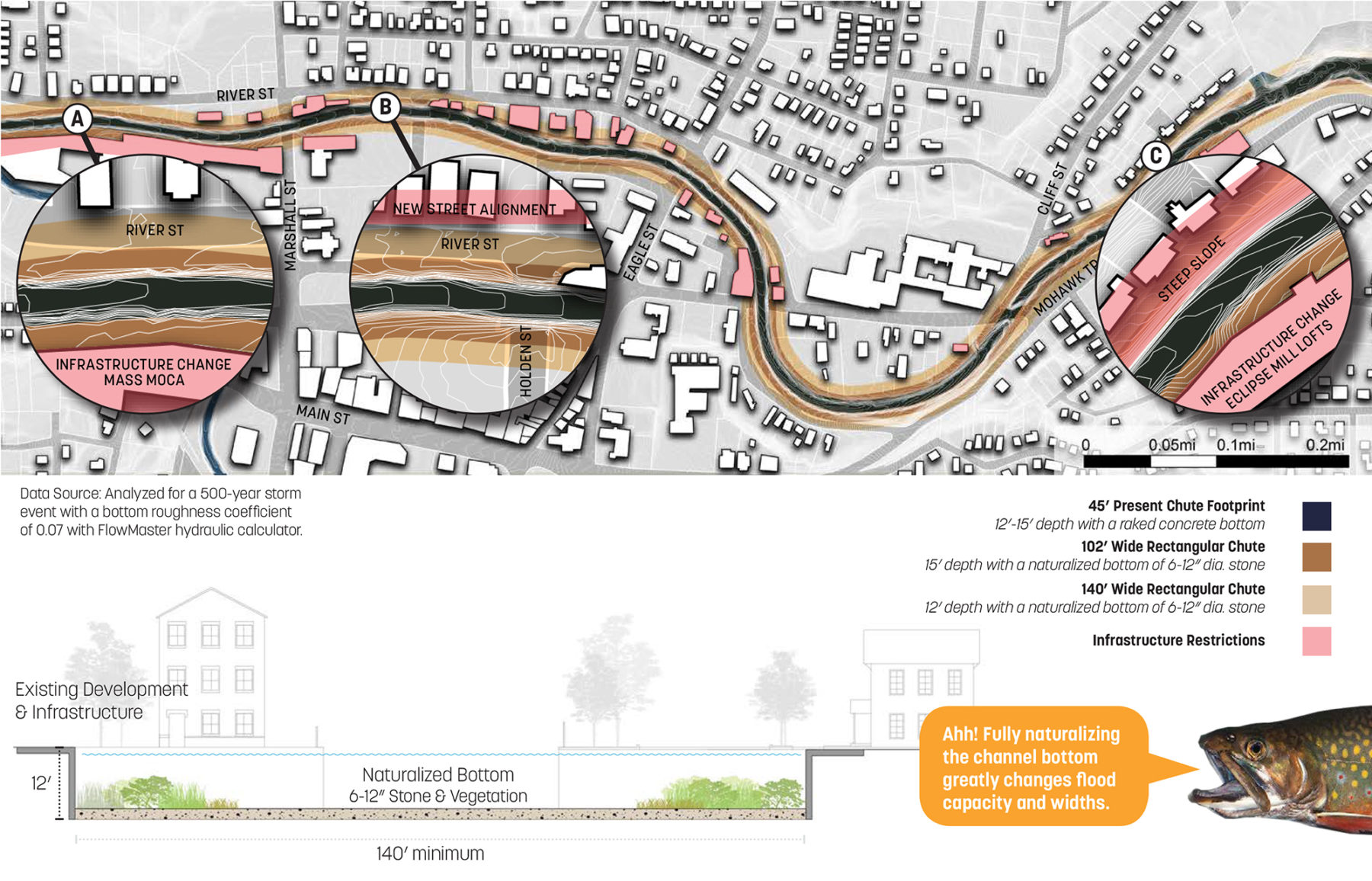
When designing the Hoosic River North Branch, the Sasaki team weighed the ecological benefits of a naturalized stream bottom against the constraints of maintaining flood protection for existing infrastructure. Ultimately, the team compromised by implementing a naturalized channel where existing conditions provide sufficient width to accommodate flooding.
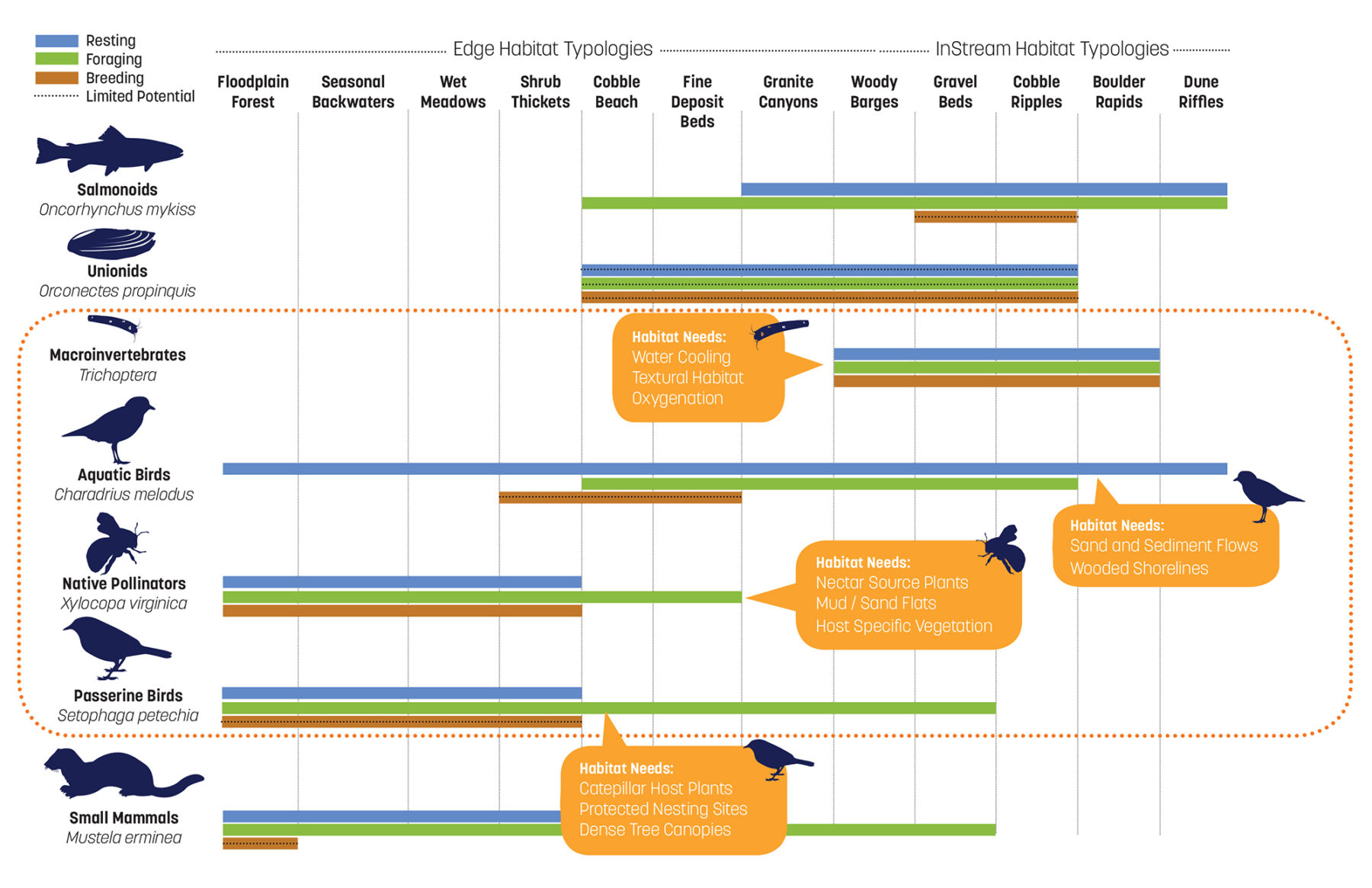
Looking at different animals’ food, shelter, and breeding requirements allowed the team to see which of those needs could be met in different habitat types. By picking animal groups whose habitat needs could potentially be fulfilled within the design area and catering the design towards meeting those needs, the channel restoration could have a positive impact on local ecology.
It’s hard to measure all the far-reaching impacts of the measures we make, and difficult to know how to weigh such different metrics against each other. But by holding dialogue, we can at least be conscientious of these tradeoffs and try to minimize the negative while maximizing the beneficial.